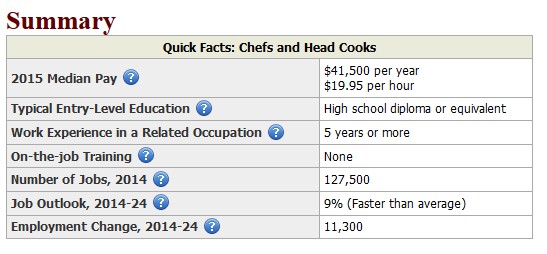Economics for Culinary Arts Students?
Ms. Jean Sweeney of Bremen Consolidated District 228 of Chicago presents her lesson idea.
AIER’s Teach-the-Teachers Initiative encourages teachers to integrate economic concepts into their classroom lessons. The final project of the program is the presentation of a lesson idea that was generated during the workshop. I am always amazed how creative the teachers are in their approaches to the lesson. The recent program held on July 11-13, 2016, at the Federal Reserve Bank of Chicago was no exception.
Jean Sweeney, of the Bremen Consolidated District 228 of Chicago, presented an interesting application of a lesson about the concept of unemployment. When she opened her presentation by saying that she will be teaching a Culinary Arts course in the fall, I was puzzled. How can an unemployment rate calculation be relevant to cooking?
But as the story unfolded, we learned the connection: Jean’s students aren’t just learning how to cook, they are learning how to choose a career, and what kind of life they can expect if they pick a career in the culinary arts. To illustrate this point Jean will introduce the relationship between unemployment and education level.
As the students learn about the economic concept of unemployment they will research data from the Bureau of Labor Statistics. Her students will also complete an AIER-developed Scavenger Hunt, using data from the Federal Reserve Economic Data (FRED) portal, which they will use to develop a graph showing the relationship between a person’s level of education and the likelihood of being unemployed.
These data are one way to understand that for every year of education completed, the likelihood of being unemployed decreases. The visual display of these data in a graph helps the students to visualize these concepts. In addition, Ms. Sweeney will introduce her students to the BLS Occupational Outlook Handbook, which provides information about average salary, what education one must have to enter this profession, the skills needed, what one can expect about the work and work setting, and what the growth potential is for these jobs in the future. She will then ask them to navigate to the “Chefs and Head Cooks” section (see excerpt below) where they can also explore entry-level positions (like bakers and food preparation and serving occupations), which can lead to becoming a chef.
Excerpt: Chefs and Head Cooks job data from Occupational Outlook Handbook, Bureau of Labor Statistics, http://www.bls.gov/ooh/food-preparation-and-serving/chefs-and-head-cooks.htm.
The main takeaway of this exercise for students will be the ongoing discussion and introduction to the research tools for exploring possible career paths in general, and in the culinary arts in particular.
We are excited that participating teachers bring economics into their classes. As our program draws interested teachers from variety of disciplines, we are building a portfolio of ideas to support our Economics-Across-the-Curriculum approach.
Our final workshop for this summer is opening today, August 2, 2016, at the Federal Reserve Bank of Philadelphia.
Click here to sign up for the Daily Economy weekly digest!









